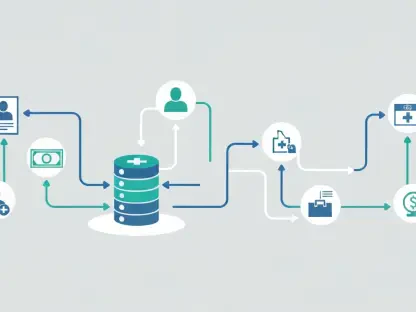Model-Based Systems Engineering (MBSE) represents a transformative approach in systems engineering that fundamentally revolutionizes the design, development, and management of complex systems. This paradigm shift from traditional document-centric methods to a model-based methodology introduces a more collaborative, efficient, and consistent practice for system lifecycle management. By leveraging interlinked models that serve as central artifacts, MBSE facilitates a clearer understanding of system behaviors and interactions, thereby enhancing the overall effectiveness and quality of the systems developed.
Understanding Model-Based Systems Engineering (MBSE)
The Paradigm Shift in Systems Engineering
The advent of Model-Based Systems Engineering (MBSE) marks a departure from conventional document-based practices, which often lead to scattered and outdated system representations. MBSE introduces a collaborative environment where changes are dynamically incorporated, ensuring that all stakeholders have access to the latest system information. By adopting interconnected models as the primary sources of truth, improvements in consistency, traceability, and verification across the system’s lifecycle are achieved with a degree of precision and clarity that traditional methods struggle to match.
Systems Thinking: The Foundation of MBSE
Systems thinking is integral to MBSE, compelling engineers to consider not only individual components but also the complex interdependencies that define the functionality of the entire system. By emphasizing this holistic perspective, MBSE allows for a more profound understanding of how changes in one part of the system may ripple through and affect the whole. Consequently, systems engineering principles provide the structure necessary for MBSE’s application, ensuring that system consideration is robust, comprehensive, and reflective of real-world operations and constraints.
The Four Pillars of MBSE
#### Requirements and Behavior ModelingIn MBSE, requirements are not static documents but living parts of an interconnected model that governs the system’s intended behaviors. Capturing these requirements and modeling behaviors is a critical step that ensures a shared understanding among stakeholders and serves as a foundation for design and testing. Tools such as SysML diagrams facilitate the visual representation of these elements, offering a clear roadmap of what the system is expected to do and enabling stakeholders to identify potential issues early in the development process.#### Architectural and Testing FrameworksArchitectural modeling in MBSE provides a blueprint that details the system’s structural elements and their relationships, guiding the development process and ensuring coherence among various components. Testing, on the other hand, is seamlessly integrated within the MBSE framework, enabling continuous validation of the system against its requirements. This integration ensures that any deviations from expected behaviors are identified and addressed promptly, reinforcing the system’s integrity and reliability.
MBSE’s Integration with Agile Development
Aligning with Agile Principles
Model-Based Systems Engineering and Agile development resonate on many levels – both prioritize adaptability, iterative progress, and stakeholder collaboration. MBSE’s compatibility with Agile practices enhances the ability to respond to changing requirements swiftly. It accommodates iterative development and testing, thus fostering an environment where continuous improvement is not only possible but encouraged. This synergy bridges the realm of software development with broader system engineering challenges, offering a comprehensive solution that caters to complex system needs.
Advantages and Accelerated Development Cycles
Leveraging the strength of MBSE in system development leads to tangible benefits such as rapid prototyping, quicker iterative testing, and faster product delivery without sacrificing quality. By enabling early discovery and resolution of issues, MBSE fosters a proactive rather than reactive approach to system development. This proactive stance can significantly compress development cycles, reduce costs, and increase the system’s overall value and performance from the get-go.
Implementing MBSE in Practice
Overcoming Adoption Challenges
Transitioning to MBSE can pose significant hurdles, from cultural resistance within organizations to technical challenges related to tool interoperability. To overcome these obstacles, a strategic approach is essential, one that includes stakeholder engagement, training, and selective tool integration that supports MBSE practices. It’s crucial to acknowledge that the shift to MBSE isn’t solely a technical upgrade but also an organizational transformation that requires buy-in at all levels.
Establishing a Framework for MBSE Adoption
For organizations aiming to adopt MBSE, a gradual approach is recommended. This may begin with training teams in the fundamentals of MBSE, selecting appropriate tools that accommodate existing workflows, and initiating small-scale projects to build confidence and competence. The gradual scaling of MBSE helps ensure a seamless transition and allows the organization to learn and adapt to the new methodology effectively, thereby mitigating the risks associated with a more radical overhaul.
Historical Context and Contemporary Applications
A Brief History of MBSE
The inception of Model-Based Systems Engineering is rooted in the collective efforts of fields such as software engineering and systems analysis over the past few decades. Key developments such as the creation of UML (Unified Modeling Language) and SysML (Systems Modeling Language) have paved the way for today’s MBSE practices. These historic milestones underscore the iterative nature of innovation and the maturation of systems engineering disciplines.
Modern-Day MBSE in Various Industries
Today, MBSE is applied across various sectors, from aerospace to healthcare and defense. Its impact is significant in streamlining complex processes, reducing time-to-market, and facilitating systems that are more adaptable to change. Industry leaders harness MBSE to enhance the development and management of complex products and systems, ultimately contributing to more robust, efficient, and innovative outcomes.Embracing MBSE represents a significant leap forward in managing the lifecycle of complex systems. While the shift towards a model-based approach requires a rethinking of traditional engineering practices, the benefits of efficiency, collaboration, and high-quality systems development that it delivers are indisputable. MBSE is more than a methodology—it’s a future-proof strategy that positions organizations to lead in the constantly evolving landscape of systems engineering.









